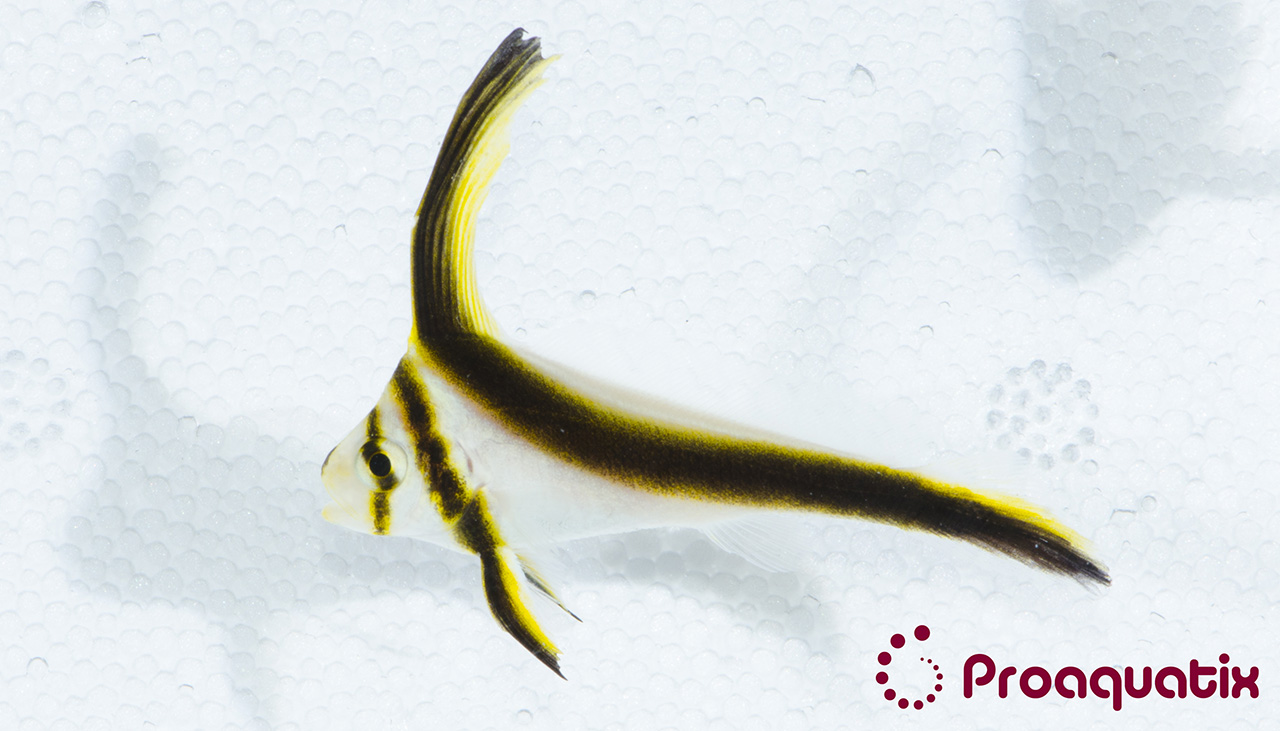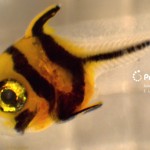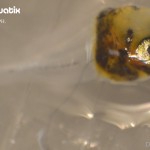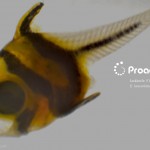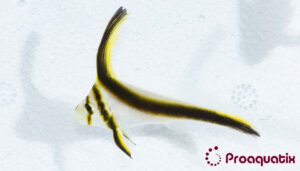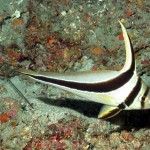
On June 16, 2015, Proaquatix officially released the news that they’ve successfully spawned and reared the Jackknife Fish, Equetus lanceolatus (see the press release and additional images at the end of this article).
This isn’t a species first; captive-breeding of the Jack-Knifefish was first accomplished decades earlier by Forest Young (currently of Dynasty Marine) at Aqualife Research Corp., and related species have also been bred successfully. Pioneering breeders even succeeded in creating the hybrid “Hijack” Fish, a mating of the High Hat (Equetus acuminatus) x Jackknife Fish (E. lanceolatus).
Jackknives are among the less-commonly seen Florida fishes; typically the High Hat is readily available, but the Jackknife seems elusive. The related Spotted Drum, which we’ve lusted over more than once (#1, and #2), is even more mythical, simply not showing up with any level of routine availability.
Combined with relative rarity, Jackknives and Spotted Drums seem very prone to shipping stress, making them difficult fishes to obtain (Proaquatix notes that captive-bred Jackknives have solid shipping track records – just one example of how captive-breeding can improve a fish for the aquarium hobby). With so many more diverse fishes readily available to the home aquarist, a species like the Jackknife Fish simply has fallen out of favor, becoming more of a passing curiosity and novelty. But, presented with commercial availability of this beautiful fish as a captive-bred animal, we have an opportunity to change that.
Some websites suggest that the Jackknife Fish is not “reef safe” or “reef compatible”, but I wondered if that was in fact the case. When I put the question to Proaqautix’s Director of Marketing and Sales, Seth Pierce, he responded. “If Lionfish are considered reef safe Jackknives are 100% reef safe. Yes, they may eat any shrimp if it presents itself and of course they will eat other little fish that present themselves, but they will not bother corals and anemones or similar invertebrates.”

Given that the adult size of a Jackknife Fish is only 9 in. max,. it’s unlikely that they’ll be doing any serious decimation to fish populations except for what can fit in their mouths. Would a clownfish fit? Pierce was skeptical that predation on most fish would ever be an issue.
“I doubt they would ever eat a clownfish, even the small ones for a few reasons. First, because it’ll take quite a while for the jackknife to grow large enough to eat a clownfish. Second, our jackknives have never been exposed to the type of fish as a prey item; they only know pellets. Third, they have been raised and held with clownfish; we hold them together with clownfish now, but of course they’re more similarly sized,” he notes.
Still, it has been suggested that Jackknives are also rather peaceful fish; they are not boisterous and rowdy. These captive-bred Jackknives would feel most at home with other calm tankmates who allow them to freely swim over the sandbed in search of a tasty morsel, but we suspect they’ll hold their own quite well in the typical reef fish community.
I’m personally VERY excited to see Jackknives become available as captive-bred fishes. I hope they don’t share the fate of ORA’s Mandarin Dragonets, but instead are welcomed into our tanks without hesitation. We don’t see this species often enough, and now, to have a version of the animal that is far superior to its wild counterpart, and available at the most attractive size (the young juvenile), this species stands a real solid chance at becoming a mainstream commercial offering for the trade. Let’s make that happen!
PRESS RELEASE FOLLOWS:
PROAQUATIX BREEDS JACK KNIVES IN COMMERCIAL QUANTITIES
In mid-April 2015, Proaquatix collected the first spawn from a group of Jack Knives (Equetus Lanceolatus). Rearing of the larvae lasted only 2 months. Several small test orders have been sent to customers overseas. The success and numbers are great enough that, barring any unforeseen circumstances, Proaquatix should be able to fill the industry demand for Jack Knives and replace wild collection.
The original spawning group was collected and delivered by Dynasty Marine. In typical Dynasty Marine fashion, they were gorgeous healthy specimen. Interestingly, these Jack Knives exhibited an accent of gold coloration that we had not seen before. The spawning group was held for about a year before the first spawn. Some artificial manipulation was used to achieve/collect the first spawn. The wild broodstock were not always easy to keep. It took some time to ween them on to prepared foods. In addition, they were treated for infection twice (which is rare after initial acclimation).
The larvae were easy to raise with minimal deviation from our normal protocol for pelagic eggs. They grew very quickly and were market size within 2 months.
Initially after metamorphosis, the post larvae/juveniles were bright gold/black. They quickly lost 80% of the gold coloration, but seem to retain a significant gold border. We’re very interested in the gold accent and we would love to understand the reason for the regional variation.
The Juveniles were also very easy to manage. They have proven to be hardy shippers and have not had any disease/infection issues in growout. Like all Proaquatix fish, Jack Knives are trained onto pellets at an early stage and will happily accept dry and frozen food.
If the demand is great enough and the market is receptive/supportive of these fish, then Proaquatix will establish several spawning groups to create year round availability. We will attempt to price these fish to compete with or beat wild Jack Knife prices as long as we can do so without losing profitability. They are available from Proaquatix today.
###
Additional Reading:


